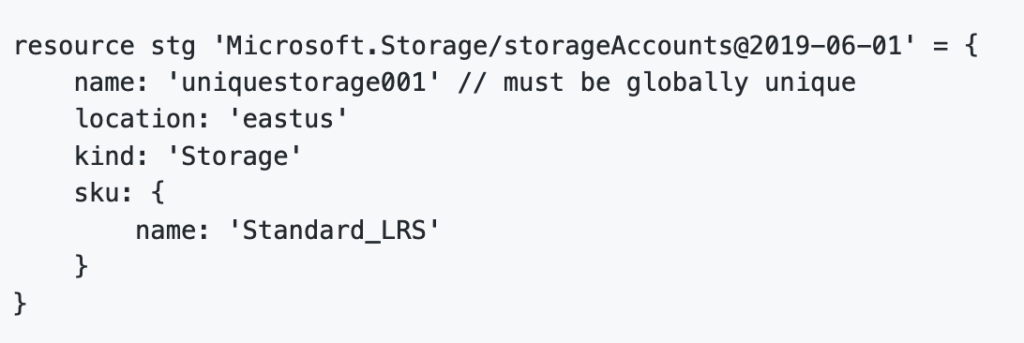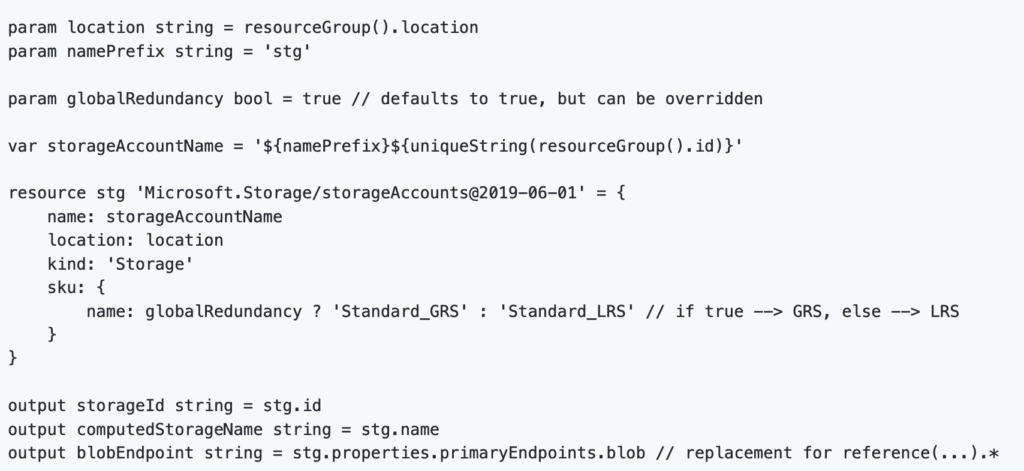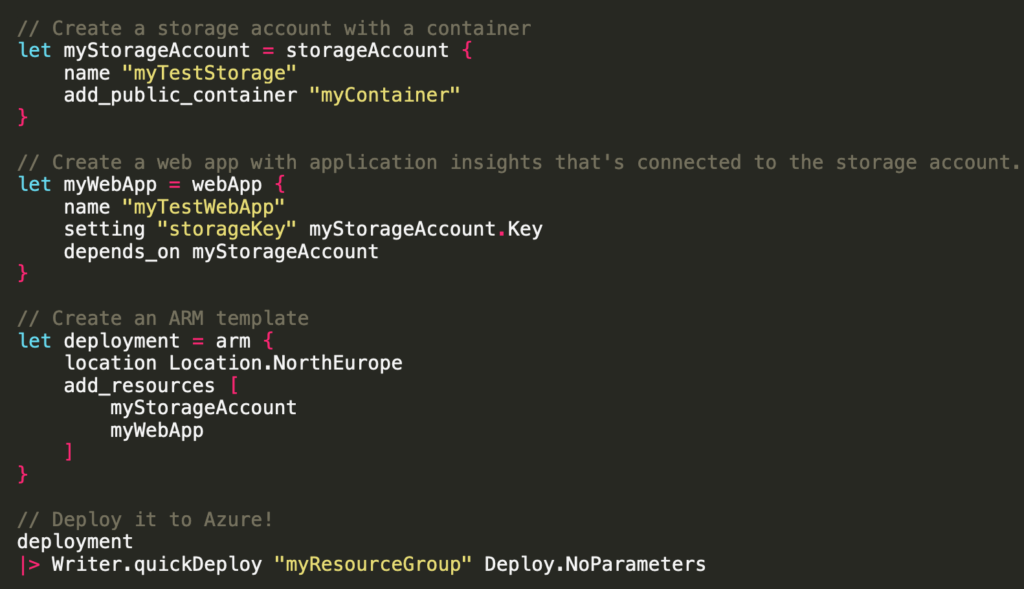If you're looking for help with C#, .NET, Azure, Architecture, or would simply value an independent opinion then please get in touch here or over on Twitter.
I’m not sure when it went public but Microsoft now have an alpha of Bicep available on GitHub. Bicep is their attempt to deal with the developer unfriendly horror and rats nest that is ARM templates.
I took a look at it today and came away thoroughly disappointed with what I saw. Before I even started to look at the DSL itself the goals raised a whole bunch of red flags… so lets start there.
And strap in… because this is going to be brutal.
Bicep Goals
- Build the best possible language for describing, validating, and deploying infrastructure to Azure.
Laudable. - The language should provide a transparent abstraction for the underlying platform. There must be no “onboarding step” to enable it to a new resource
typeand/orapiVersionin Bicep.
Seems important. Azure moves fast and new things are added all the time. On the one hand it would be nice to see each push of a new resource / API to Azure be coupled to some nice Bicep wrapping – but given the breadth and pace of what goes on its probably not realistic.
On the other hand…. this seems dangerous. There’s a lot of intricacy in that stuff and if we just boil down to expressing the ARM inside strings with a bit of sugar round it what have we gained? - Code should be easy to understand at a glance and straightforward to learn, regardless of your experience with other programming languages.
Ok. No great quibble here. - Users should be given a lot of freedom to modularize and reuse their code. Reusing code should not require any ‘copy/paste’.
Seems weak. I’d like to see this strengthened such that writing new Bicep code shouldn’t require copy/paste – see my point (2) above as these things seem somewhat coupled. Cough. Magic strings. Cough. - Tooling should provide a high level of resource discoverability and validation, and should be developed alongside the compiler rather than added at the end.
On the one hand I don’t disagree. On the other… this seems like a bit of a cop out back to magic strings. - Users should have a high level of confidence that their code is ‘syntactically valid’ before deploying.
Wait. What? A “high level of confidence”. I don’t want a high level of confidence. I want to know. Ok – if I’m on the bleeding edge and the Azure resource hasn’t been packed into some nice DSL support yet then ok. But if I’m deploying, say, a vanilla App Service I don’t want a high level of confidence – I want to know.
I don’t about you but to me this sounds like it has the hallmarks of another half baked solution (“no its awesome” – random Twitter devrel) that still requires you to remember a bunch of low level details. And probably still relies on strings.
The Tutorial
Next I cautiously cracked open the tutorial… oh god.

Strings galore. Strings for well known identities. The joy. I’ve not installed the tooling but I assume it helps you pick the right string. But really? REALLY? Strings.
I was pretty horrified / disappointed so I continued through hoping this was just the start but as far as I can tell – nope. Strings are a good idea apparently. This is the final example for storage:

Same dogs dinner.
I can absolutely see why you want some form of string support in their. As I noted in the goals if a new API version is released you want to be able to specify it. But there are ways to achieve this that don’t involve this kind of untyped nonsense. In the normal course of events for common things like Storage accounts the only strings in use should be for names.
No wonder they can only give “confidence” things are syntactically correct.
The tutorial finishes with “convert any ARM template to Bicep” – its not hard is it. This is still a thin low value wrapper on top of ARM. We’ve just got rid of the JSON and replaced it with something else. If you don’t add much value then converting between two things is generally straight forward.
I’m struggling not to be unkind… but is their any kind of peer review for this stuff? Do people who understand languages or have a degree of breadth get involved? Do people actually *making* things using this stuff get involved? Because as someone involved in making lots of stuff and running teams making stuff – this misses by miles.
It really doesn’t have to be this way – the community are coming up with better solutions frankly. Bit of a “back to Build” but why the heck didn’t they put some weight behind Farmer – or at least lift some of its ideas (I’m glad they at least acknowledge it). Because here’s a storage account modelled in that:

Here’s a more complex Farmer block for storage and a web app:

Neater right? And typesafe. Its not hard to imagine something inbetween Farmer and Bicep that doesn’t rely on all these strings and bespoke tooling (Farmer is based on F#… so the tooling already exists) but still allows you to dive into things “not in the box”.
Conclusion
Super disappointing. Hopelessly basic. Doesn’t look to solve many problems. Another “requires lots of custom tooling” project. A tiny incremental move on from ARM. Doesn’t seem worth the effort. Better hope the Bicep tooling is good and frequently updated if you plan on using this.
If we’re now “treating ARM as the IL” (which is what it is – despite years of MS pushing back on feedback that ARM is awesome) then this really is a poor effort to build on that. Which is sad because as it comes from Microsoft its likely to become the most commonly used solution. Merit won’t have much to do with it.
If anyone from the Bicep team wants to talk about this – happy to.

Recent Comments